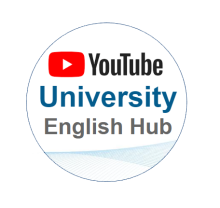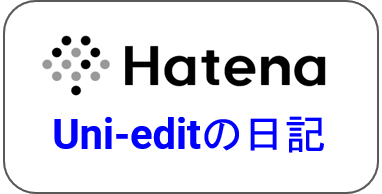難易度:上級
論文の緒言や文献レビューの部分には、その研究の背景を含めなければなりません。論文を首尾良く投稿する著者や、たびたび発表する著者は、強力な説得手段として動詞の時制を効果的に使用する方法を知っています。
それでは、結果を報告する標準的な文型に使用される二つの動詞の例をみてみましょう。二つの動詞のうち、一番目の動詞は、"to show"、"to demonstrate"、"to suggest"などのように報告機能を持つのに対して、二番目の動詞は文の内容に関連しています。現在形と過去形に注目しましょう。さて、どちらの時制の動詞を使いますか。
Gupta et al. (2012) show // showed that lower vitamin D levels in children with severe, therapy-resistant asthma (STRA) are // were associated with worse asthma control and lung function.
(訳:Guptaら(2012)は、重度の治療抵抗性喘息(STRA)を有する小児患者の血中ビタミンD濃度が低値であることは、喘息管理と肺機能の不良と関連している//いたことを示す//示した。)
一番目の動詞-show//showed
最初の動詞(show//showed)には、議論の余地なく過去形を使用することを推奨します。研究は過去に実施したのですから、過去形が適切です。
(正・自然)Gupta et al. (2012) showed that…
(訳:Guptaら(2012)は、…を示した。)
現在形を使用することは禁止されてはいませんが、「その研究は発表され現在読むことができるが、それによると」という意味合いになります。しかし、それは不自然に響きますので使用には注意が必要です。
(正・やや違和感)Gupta et al. (2012) show that…
(訳:Guptaら(2012)は、…を示す。)
二番目の動詞-are//were associated
過去形を使用するとその試験の時点までの結果に限局するのに対し、現在形を使用するとその結果が真実であり今も適用できることを示唆します。いずれも使用できますが、現在形のほうが強い印象を与えます。二番目の動詞に現在形を使用すると、結果を強く断定することがわかります。
(正)…lower vitamin D levels in children with STRA were associated with worse asthma control and lung function.
(訳:小児STRA患者の血中ビタミンD濃度が低値であることは、喘息管理および肺機能の不良と関連していた…)
[暗示:これは過去のGuptaらの試験の結果であった。]
(正・強く断定)…lower vitamin D levels in children with STRA are associated with worse asthma control and lung function.
(訳:小児STRA患者の血中ビタミンD濃度が低値であることは、喘息管理および肺機能の不良と関連している…)
[暗示:このGuptaらの結果は、今日でも有効である。]
過去の結果を暗に退けるために、過去形の相対的な弱さを使用することもできます。
Smith et al. (2008) found that vitamin D levels had no relation with asthma severity or recurrence. However, Gupta et al. (2012) reported a contradictory finding, saying that lower vitamin D levels in children with STRA are associated with worse asthma control and lung function.
(訳:Smithら(2008)は、血中ビタミンD濃度が喘息の重症度または再発性とは関係がない(英語では過去形)ことを見出した。しかし、Guptaら(2012)は相反する結果を報告しており、それによれば、小児STRA患者の血中ビタミンD濃度が低値であることは、喘息管理および肺機能の不良と関連する(英語では現在形)。)
[暗示:Smithらは関係がないと言っているが、我々は実際には関係があると考えている。]
結果を強く断定するために、最初の部分("Gupta et al. showed…")を完全に省略してしまうことも可能です。引用文献の存在を示しているので、読者は著者がある結果を引用していることはわかります。
Lower vitamin D levels in children with STRA are associated with worse asthma control and lung function (Gupta et al., 2012).
(訳:小児STRA患者の血中ビタミンD濃度が低値であることは、喘息管理および肺機能の不良と関連する(Guptaら、2012)。)
要約すると、
- 伝達動詞は、"showed"、"demonstrated"、 "suggested"などのように過去形であるのが自然です。
- 結果を述べるには、現在形と過去形のいずれも可能ですが、現在形のほうが強力です。
- 非常に強く断言するには、伝達動詞を完全に省略することさえ可能です。
アイコンをクリックして、ダウンロードする: Introduction(緒言)の過去形と現在形
Introduction(緒言)の過去形と現在形
Uni-edit English Writing Tip 007: Using Past Tense and Present Tense in your Introduction Section
Difficulty: Advanced
The Introduction and Literature Review sections of your paper must include background to your research. Authors who publish successfully and publish often know how to use verb tense effectively as a powerful persuasive tool.
Let’s take the example below, whose two verbs are a standard format for reporting findings. There are two verbs: the first verb has a reporting function (“to show”, “to demonstrate”, “to suggest”, etc.), while the second verb relates to the contents of the sentence. We will look at present tense and past tense.
Which verb tense should we insert?
Gupta et al. (2012) show // showed that lower vitamin D levels in children with severe, therapy-resistant asthma (STRA) are // were associated with worse asthma control and lung function.
First verb - show//showed
Using past tense for the first verb is uncontroversial and recommended. It is appropriate because the research was conducted in the past.
Correct & Natural: Gupta et al. (2012) showed that…
Using the present tense is not forbidden: it suggests “the study, which is published and available to read at present, says…”. However, it can sound affected: use with caution.
Correct & Slightly Strange: Gupta et al. (2012) show that…
Second verb – are//were associated
Using past tense localizes the findings to the time of the experiment, while using present tense suggests the findings are true and applicable even now. You can use both, but the present tense sounds stronger. Using the present tense for the second verb will be perceived as a strong assertion of the findings!
Correct: …lower vitamin D levels in children with STRA were associated with worse asthma control and lung function.
[This was a finding of Gupta et al.’s study in the past.]
Correct and stronger assertion: …lower vitamin D levels in children with STRA are associated with worse asthma control and lung function.
[This finding of Gupta et al. holds true even today.]
You can even use the relative weakness of the past tense to implicitly dismiss past findings.
Smith et al. (2008) found that vitamin D levels had no relation with asthma severity or recurrence. However, Gupta et al. (2012) reported a contradictory finding, saying that lower vitamin D levels in children with STRA are associated with worse asthma control and lung function.
[Smith et al. said there was no relation, but we believe that, in reality, there is a relation.]
To report findings most strongly, you can omit the first part (“Gupta et al. showed…”) entirely! The readers will know you are reporting a finding because of the presence of a citation.
Lower vitamin D levels in children with STRA are associated with worse asthma control and lung function (Gupta et al., 2012).
To sum up:
- Past tense is more natural for reporting verbs like “showed”, “demonstrated”, and “suggested”.
- Present tense and past tense are both okay for describing findings: present tense is stronger.
- You can even omit the reporting verb altogether for a very strong assertion.



